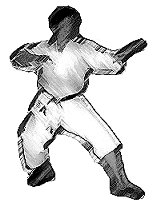

But that's 42 ideas, all involving some kind element that can be traced to tegatana no kata.Īlso, to take a break from my bitching. I may have missed one or two here and there.

same format, same thing except this illustrates the breaking away from being grasped portion of te sabaki. He separates it in kote hineri and kote gaeshi. He practices tsukuri to both the elbow and wrists. He actually does ten(10) separate techniques. Then he does some more easily identifyable tegatana movements when he is grasped, but all of these throws have tai sabaki, point of contact, and te sabaki practice involved. He goes over straight techniques, he fits and throws. He also says that jodan and gedan are tsukuri also referring to the atemi waza. He says that tsukuri has to do with the wrists, elbow, and chin. Tommy places the concept of tsukuri(fitting) after practice of principle. Anyway, the concepts in Tegatana no Kata relate more heavily to the 19 than they do in randori no kata. The Uki Waza he attributes to Judo which makes sense because they are present in randori no kata and not the 19. If you believe Nariyama he relates the atemi waza in principle to koshiki no kata and kendo, He relates the hiji waza in principle to Koshiki No Kata. You have 5 atemi waza, 6 hiji waza, 8 tekubi waza. Folks, 17 kata IS NOT the primary mode of Tomiki ryu instruction, not how Tommy saw it anyway. The next section I'm going to have to bitch about for a minute. we actually see hand positioning and movements from tegatana no kata. Next we have the when grasped practice where Ohba has a knife. We see actual hand movements from tegatana dosa. The blocking exercise would fall under when separated, I suppose this is avoidance, I also suppose that grasping could come anytime after avoidance. And when separated: avoiding and grasping. You have when grasped: breaking away, and nigiri gaeshi.

This is broken down into two areas with 2 subareas each. Then there is the te sabaki (hand movement) section. Tegatana dosa supply's the variables of ways of touching being touched, point of contact ideas. After that he combines the first practice of tai sabaki, with maai and metsuke, with dodging Ohbas shomenuchi and bokken. The exercise he does here is called tegatana awase where him and Ohba dance around and keep maai/metsuke. Like I said, the lesson here I suppose is the range of motion where you can be touched or touch the other guy. Then he does some hand movements and sword movements and then he does Tegatana Dosa. The next part is classified as point of contact. Then he goes into his 8 ways of moving, unsoku dosa, and then kneewalking. Tai-sabaki practice,included posture and movement(this section in Kyogi is when Tommy is standing and sitting in seiza, he's basically saying you have to stand and sometimes sit in seiza. Tegatana no Kata figures heavily in all 3 practices. His practice of these principles of Aikido had three areas: tai sabaki, point of contact, and te sabaki. This is what makes Ashihara Karate an effective form of self-defence as it enables anyone, with the correct effort, be able to overcome an opponent regardless of his size or physical prowess.Basically Tommy had 3 principles of aikido: natural posture, non-resistance, breaking balance. the "blind spot"), and ultimately establishing control over him. In Ashihara Karate, this term is extrapolated to mean safely receiving an attack from the opponent by moving into positions of maximum advantage In Japanese martial arts, sabaki commonly translates to 'positioning' or 'angling' the body, with reference to the opponent. In comparison to the traditional karate approach, Ashihara Karate training emphasizes natural body movements and straightforward techniques that are directly applicable from practice, over relying on brute strength and complex forms.įor fighting and self-defence, the System emphasizes on the concept of sabaki. It is an eclectic Japanese martial art that focuses on real fighting applications or jissen (実践), while being an excellent means of cultivating the human body, mind and spirit. The Sabaki Method for Fighting and Self-DefenceĪshihara Karate was created out of the need for a more practical system of Karate that takes into account the realities of today's world.


 0 kommentar(er)
0 kommentar(er)
